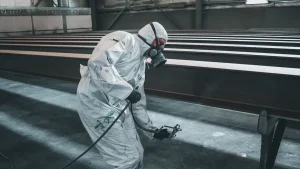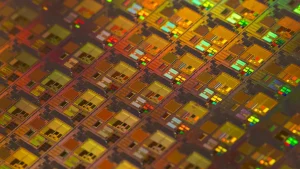
Multi-layer systems featuring sic coating and tac coating represent a significant advancement in protective coating technology. These innovative systems integrate silicon carbide (SiC) and tantalum carbide (TaC) layers to deliver coatings with outstanding resistance to heat, corrosion, and mechanical wear. Their cutting-edge design effectively addresses critical challenges in extreme environments where conventional coatings often fail. For instance, CVD SIC COATING demonstrates a 2.8x improvement in oxidation resistance at 1,800°C, while CVD TAC COATING applied to graphite bipolar plates shows a 30% increase in corrosion resistance, highlighting their superior performance in high-temperature and corrosive conditions.
Industries that demand robust and versatile solutions, such as aerospace, nuclear energy, and green hydrogen production, greatly benefit from these advancements. By utilizing chemical vapor deposition (CVD) technology, sic coating ensures precise structural integrity, while CVD TAC COATING enhances stability under extreme conditions. These hybrid systems not only prolong the lifespan of essential components but also lower maintenance expenses, making them an economical and reliable choice for challenging applications.
Key Takeaways
- Multi-layer SiC/TaC systems protect well from heat, rust, and damage. They work great in tough environments.
- These coatings help parts last longer, cut repair costs, and make machines more reliable in fields like space travel and nuclear power.
- Chemical vapor deposition (CVD) applies the coatings carefully, making them stronger and last longer.
- Engineers can adjust these coatings to fit different needs, so they work best in many situations.
- SiC/TaC systems help the planet by reducing waste and aiding clean energy, matching global eco-friendly goals.
Overview of Protective Coatings
Purpose and Functionality
Protective coatings play a vital role in safeguarding industrial assets from environmental and operational damage. These coatings act as a barrier, preventing corrosion, wear, and chemical degradation, which can compromise the structural integrity of materials. For instance, the U.S. Navy allocates over $250 million annually to corrosion control, emphasizing the importance of coatings in marine environments. Advanced formulations, such as epoxy-functional silicone resins, demonstrate superior resistance to harsh chemicals and UV exposure, making them indispensable in industries like marine, aerospace, and construction.
The functionality of protective coatings extends beyond durability. They enhance aesthetic appeal, improve adhesion, and reduce maintenance costs. Case studies reveal that modern coatings exhibit better gloss retention and dirt resistance compared to traditional alternatives, ensuring long-term performance in demanding applications.
Challenges in Extreme Environments
Extreme environments pose unique challenges that demand innovative coating technologies. Thermal cycling, for example, can cause delamination or cracking, compromising the coating’s effectiveness. Coatings must maintain adhesion and stability across wide temperature ranges, especially in aerospace and industrial applications. Corrosion remains a significant concern in sectors like marine and oil and gas, where saltwater, humidity, and biological factors accelerate material degradation.
Mission-critical applications, such as those in aerospace, require coatings that withstand high temperatures and mechanical stress while preserving precise optical properties. Standardized testing methods, including salt spray tests, are essential to evaluate corrosion resistance and ensure reliability under harsh conditions.
Limitations of Traditional Coatings
Traditional coatings often fall short in extreme environments due to their limited thermal resistance and susceptibility to chemical degradation. While they provide basic protection, they struggle to maintain performance under high temperatures or prolonged exposure to corrosive elements. For example, marine environments expose materials to saltwater and humidity, leading to structural failures and increased maintenance costs when traditional coatings are used.
Additionally, traditional coatings lack the advanced adhesion and durability required for aerospace and industrial applications. Their inability to withstand thermal cycling or maintain optical properties under stress highlights the need for innovative solutions like sic coating, which offers enhanced stability and resistance in challenging conditions.
What Are Multi-Layer SiC/TaC Hybrid Systems?
Composition and Structure
Multi-layer SiC/TaC hybrid systems consist of alternating layers of silicon carbide (SiC) and tantalum carbide (TaC). These materials are carefully engineered to combine the unique properties of each layer, creating a robust and high-performance protective coating. SiC provides exceptional thermal stability and oxidation resistance, while TaC contributes superior hardness and resistance to chemical degradation. Together, they form a synergistic system capable of withstanding extreme environmental conditions.
Material analysis studies have revealed the structural integrity of these systems under harsh conditions. Researchers observed significant improvements in ablation and oxidation resistance due to the formation of a protective high-temperature glass-ceramic layer during oxidation. This layer acts as a barrier, preventing further degradation and enhancing the coating’s performance. Additionally, the mechanical properties of C f /C-SiC-TiC-TaC composites demonstrated a one-order-of-magnitude increase in resistance to oxidation and ablation compared to unprotected samples. These findings underscore the reliability of multi-layer SiC/TaC systems in demanding applications.
Innovations in SiC Coating Design
Advancements in SiC coating design have played a pivotal role in the development of multi-layer hybrid systems. Modern techniques, such as chemical vapor deposition (CVD), enable precise control over the coating’s thickness and microstructure. This precision ensures uniform coverage and eliminates defects that could compromise performance.
One notable innovation is the integration of SiC with other ultra-high-temperature ceramics like TaC. This combination enhances the coating’s ability to withstand thermal cycling and extreme heat. Studies have shown that C f /C-SiC-TiC-TaC composites maintain thermal stability even under severe oxidizing conditions, making them ideal for aerospace and industrial applications. Post-test microstructure investigations revealed that these coatings retain their integrity, further validating their suitability for high-performance environments.
Differences from Traditional Coatings
Multi-layer SiC/TaC hybrid systems differ significantly from traditional coatings in terms of composition, performance, and application. Traditional coatings often rely on single-layer formulations that lack the advanced properties required for extreme environments. In contrast, SiC/TaC systems utilize a multi-layer approach, where each layer serves a specific function, such as thermal resistance or chemical stability.
The thermal resistance of these hybrid systems far exceeds that of conventional coatings. For example, the formation of a protective glass-ceramic layer during oxidation provides an additional defense against high temperatures. Traditional coatings, on the other hand, often degrade under similar conditions, leading to material failure. Furthermore, the mechanical properties of SiC/TaC systems, such as hardness and wear resistance, surpass those of standard coatings, ensuring longer service life and reduced maintenance costs.
These differences highlight the transformative potential of multi-layer SiC/TaC hybrid systems in industries that demand advanced protective solutions. By addressing the limitations of traditional coatings, these systems pave the way for more reliable and efficient performance in extreme environments.
Advantages of SiC/TaC Hybrid Systems
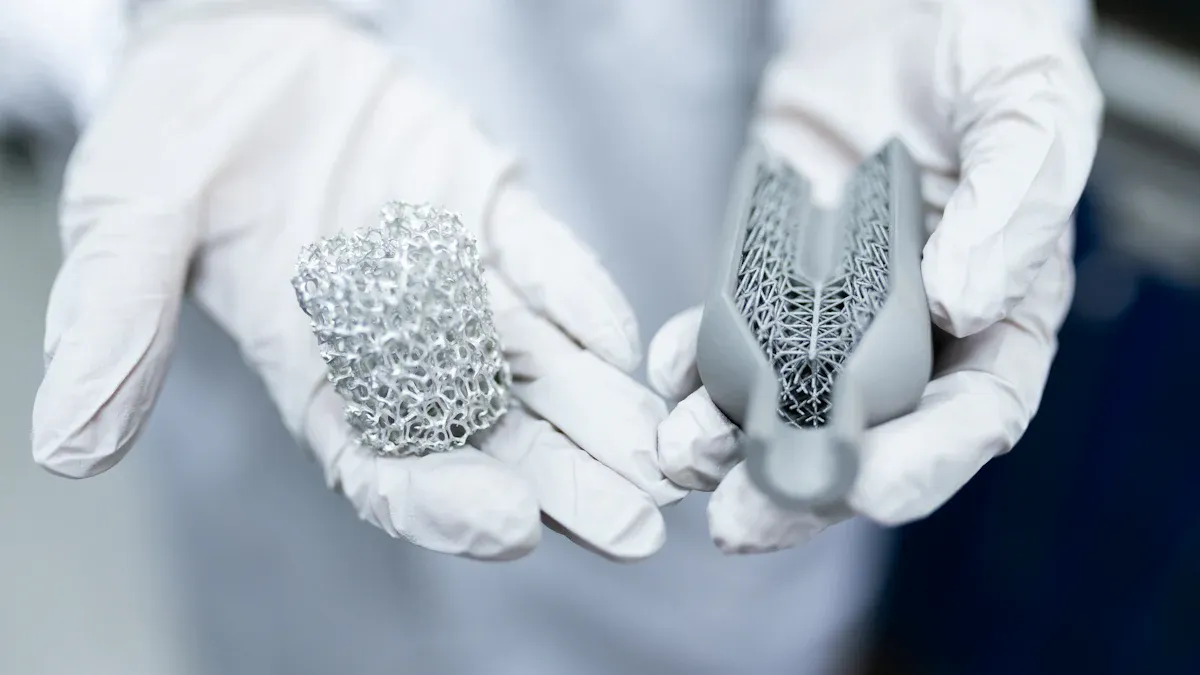
Thermal Resistance and Stability
SiC/TaC hybrid systems excel in environments where extreme temperatures challenge material integrity. Silicon carbide (SiC) layers provide exceptional thermal stability, maintaining their structure and performance even at temperatures exceeding 2,000°C. Tantalum carbide (TaC), known for its ultra-high melting point, complements SiC by enhancing the system’s resistance to thermal shock and oxidation.
These coatings create a protective barrier that prevents heat-induced degradation. For instance, the formation of a glass-ceramic layer during oxidation shields the underlying material from further damage. This feature is particularly valuable in aerospace applications, where components must endure rapid temperature fluctuations during flight. Unlike traditional coatings, which often fail under such conditions, SiC/TaC systems remain stable and reliable.
The precision offered by chemical vapor deposition (CVD) technology further enhances the thermal resistance of these systems. By ensuring uniform application, CVD minimizes defects that could compromise performance. This makes sic coating an ideal choice for industries requiring materials that can withstand prolonged exposure to extreme heat.
Durability and Wear Resistance
Durability is a defining characteristic of SiC/TaC hybrid systems. The combination of SiC’s hardness and TaC’s resistance to chemical wear creates a robust coating capable of withstanding mechanical stress and abrasive forces. This durability significantly extends the lifespan of components, reducing the need for frequent replacements and maintenance.
In high-wear environments, such as manufacturing or defense, these coatings provide unmatched protection. SiC layers resist surface erosion caused by friction, while TaC enhances the system’s ability to endure chemical attacks from corrosive substances. Together, they form a synergistic defense against both physical and chemical degradation.
Studies have demonstrated that SiC/TaC systems outperform traditional coatings in wear resistance tests. For example, components coated with sic coating exhibit minimal material loss even after prolonged exposure to abrasive conditions. This durability translates to cost savings and improved operational efficiency for industries relying on high-performance materials.
Adaptability to Harsh Conditions
SiC/TaC hybrid systems offer unparalleled adaptability to harsh environments. Their multi-layer design allows for customization, enabling engineers to tailor the coating’s properties to specific applications. This adaptability ensures optimal performance in diverse settings, from high-radiation zones to corrosive chemical plants.
The ability of these systems to maintain structural integrity under extreme conditions sets them apart from traditional coatings. SiC layers provide a strong foundation, while TaC enhances resistance to environmental factors such as radiation and chemical exposure. This makes them indispensable in industries like nuclear energy, where materials must endure both high temperatures and radiation without compromising safety.
Moreover, the scalability of these coatings ensures their applicability across various industries. Whether used in aerospace, manufacturing, or defense, SiC/TaC systems deliver consistent performance. Their adaptability, combined with the precision of CVD technology, positions them as a versatile solution for the most demanding environments.
Cost-Effectiveness and Longevity
Multi-layer SiC/TaC hybrid systems offer significant cost advantages, making them an attractive choice for industries operating in extreme environments. Their exceptional durability and resistance to wear reduce the frequency of repairs and replacements, leading to substantial savings over time. For example, components coated with these systems maintain their structural integrity even under harsh conditions, minimizing downtime and operational disruptions.
The longevity of these coatings further enhances their cost-effectiveness. Traditional coatings often degrade quickly when exposed to high temperatures or corrosive substances, requiring frequent reapplication. In contrast, SiC/TaC systems provide long-lasting protection, ensuring that critical components remain functional for extended periods. This durability translates to lower maintenance expenses and improved asset reliability, particularly in industries like aerospace and manufacturing.
Another factor contributing to their economic value is the precision of chemical vapor deposition (CVD) technology. This method ensures uniform application, reducing material waste and enhancing the performance of the sic coating. By optimizing resource utilization, CVD technology lowers production costs while delivering superior quality.
Industries also benefit from the scalability of these hybrid systems. Their adaptability to various applications allows manufacturers to standardize protective solutions across different components, streamlining production processes and reducing overall costs. This versatility, combined with their long service life, makes SiC/TaC hybrid systems a cost-effective investment for businesses seeking reliable and efficient protective coatings.
Applications in Extreme Environments
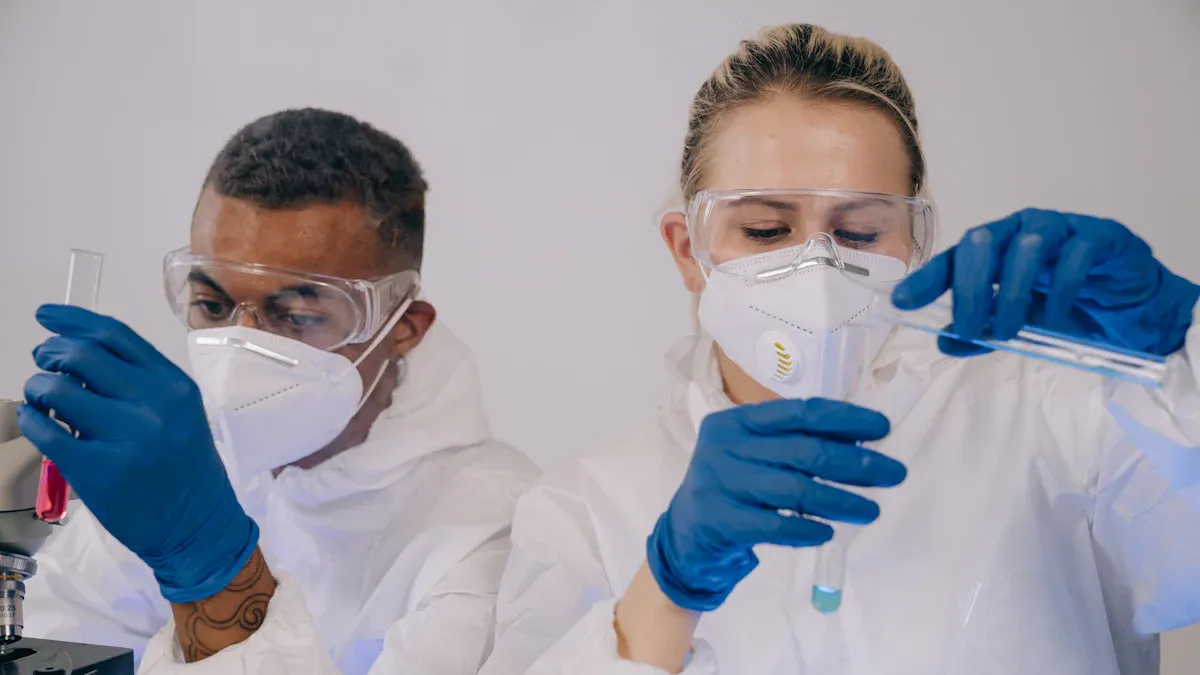
Aerospace and Space Exploration
Protective coatings play a critical role in aerospace and space exploration, where materials face extreme conditions such as high temperatures, vacuum environments, and radiation exposure. Polyurethane coatings, for instance, perform exceptionally well in these settings due to their ability to withstand extreme temperatures and maintain integrity in vacuum conditions. Lightweight thin-film coatings further enhance performance by reducing corrosion and wear, which is vital for satellite components and space vehicles.
Modern formulations also address unique challenges in space. Low outgassing properties ensure sensitive equipment remains unaffected during missions, while high-performance pigment coatings provide UV and radiation protection. Thermal management coatings safeguard materials from temperature fluctuations, and conductive lightning strike coatings allow electrical charges to pass without damaging aircraft. These innovations highlight the importance of advanced coatings in ensuring the safety and longevity of aerospace components.
Nuclear Energy and High-Radiation Settings
In nuclear energy applications, protective coatings must endure high radiation levels and extreme temperatures while maintaining structural integrity. Multi-layer systems, such as those incorporating sic coating, excel in these environments. Silicon carbide layers resist radiation-induced degradation, while tantalum carbide enhances chemical stability. This combination ensures reliable performance in reactor components and other critical systems.
Coatings designed for nuclear settings also provide resistance to corrosion caused by exposure to radioactive materials. Their adaptability allows engineers to customize properties for specific applications, such as shielding against radiation or enhancing thermal conductivity. These features make them indispensable in maintaining safety and efficiency in nuclear power plants and research facilities.
High-Temperature Manufacturing
High-temperature manufacturing processes, such as metal forging and glass production, demand coatings that can withstand extreme heat and corrosive environments. Multi-layer systems, including sic coating, offer exceptional thermal resistance and durability. Silicon carbide layers provide stability at temperatures exceeding 2,000°C, while tantalum carbide enhances resistance to chemical wear.
Testing methods validate the performance of these coatings in manufacturing settings. For example, ASTM D2485 evaluates resistance to elevated temperatures, while differential scanning calorimetry highlights thermal events like degradation onset. The Houston pipe test assesses cyclic performance, ensuring coatings maintain integrity under fluctuating conditions. These rigorous evaluations demonstrate the reliability of advanced coatings in high-temperature applications, reducing downtime and extending equipment lifespan.
Defense and Military Uses
Protective coatings play a vital role in defense and military applications, where materials must endure extreme conditions, including high temperatures, corrosive environments, and mechanical stress. Multi-layer SiC/TaC hybrid systems offer unmatched reliability in these demanding scenarios. Their ability to resist thermal shock, abrasion, and chemical degradation ensures the longevity of critical components, such as armored vehicles, missile systems, and naval equipment.
Military operations often expose equipment to harsh environments, including desert heat, arctic cold, and saltwater corrosion. SiC/TaC coatings provide a robust defense against these challenges. Silicon carbide layers deliver exceptional thermal stability, while tantalum carbide enhances resistance to wear and chemical attacks. Together, they create a protective barrier that maintains performance under extreme conditions.
Performance evaluations and field tests validate the reliability of these coatings in defense applications. Testing methods include both laboratory and field assessments, as shown in the table below:
| Type of Testing | Description |
|---|---|
| Field Testing | Exposes coated coupons at various sites to assess performance over time under real conditions. |
| Laboratory Testing | Conducts accelerated tests to evaluate specific characteristics of coatings, though results may not always predict field performance. |
Field testing demonstrates the durability of SiC/TaC systems in real-world conditions, while laboratory testing highlights their resistance to specific stressors, such as thermal cycling and corrosion. These evaluations ensure that coatings meet the rigorous demands of military applications.
The adaptability of SiC/TaC hybrid systems further enhances their value in defense. Engineers can customize coatings to address specific challenges, such as radiation shielding or enhanced abrasion resistance. This versatility makes them indispensable for modern military technologies, ensuring operational efficiency and reducing maintenance costs.
Future Trends and Innovations
Advances in Ultra-High Temperature Ceramics
Ultra-high temperature ceramics (UHTCs) are revolutionizing protective coatings by offering unparalleled thermal resistance and mechanical strength. These materials, including silicon carbide (SiC) and tantalum carbide (TaC), are engineered to withstand temperatures exceeding 2,000°C. Recent advancements focus on enhancing their oxidation resistance and structural integrity under extreme conditions. Researchers are exploring innovative manufacturing techniques, such as additive manufacturing, to create complex geometries that optimize performance.
Industries like aerospace and nuclear energy benefit significantly from these developments. For example, UHTCs improve the reliability of components exposed to rapid thermal cycling, such as turbine blades and reactor cores. The integration of sic coating into multi-layer systems further enhances their ability to resist heat-induced degradation, making them indispensable in high-performance applications.
Integration with Smart Coating Technologies
Smart coating technologies are transforming the protective coatings industry by introducing functionalities that respond to environmental changes. These coatings incorporate sensors and self-healing mechanisms, enabling real-time monitoring and repair of damaged surfaces. For instance, aerospace applications utilize smart coatings to detect stress fractures and initiate self-repair processes, ensuring the safety and longevity of critical components.
Digitalization and automation are driving the adoption of smart coatings. Robotics and advanced application systems improve efficiency and precision during the coating process, reducing material waste and enhancing performance. Industries are leveraging these technologies to meet growing regulatory demands for safer and more sustainable formulations. The combination of smart coatings with sic coating provides a robust solution for extreme environments, offering both durability and adaptability.
Customization and Scalability
Customization and scalability are key trends shaping the future of protective coatings. Engineers are developing tailored solutions to address specific challenges in diverse industries, from high-temperature manufacturing to defense. Multi-layer systems, such as those incorporating SiC and TaC, allow for precise adjustments in coating thickness and composition to meet unique requirements.
Scalability ensures that these advanced coatings can be applied across various sectors without compromising quality. Infrastructure development in emerging economies is driving demand for protective coatings that balance performance and cost-effectiveness. Industries focusing on asset protection are adopting high-performance coatings to reduce lifecycle costs and improve operational efficiency.
The table below highlights emerging trends and innovations influencing the protective coatings industry:
| Trend/Innovation | Description |
|---|---|
| Eco-friendly coatings | Increasing demand for sustainable coatings leading to the development of water-based and powder coatings. |
| Infrastructure development | Construction boom in developing economies driving demand for protective coatings. |
| Asset protection focus | Industries focusing on lifecycle cost reduction are adopting high-performance coatings. |
| Digitalization and automation | Adoption of advanced technologies like robotics improving efficiency in application processes. |
| Regulatory scrutiny | Growing regulations pushing innovation towards safer and more sustainable formulations. |
These trends highlight the industry’s shift toward innovative solutions that prioritize sustainability, efficiency, and adaptability. The integration of sic coating into these advancements ensures that protective coatings remain at the forefront of technological progress.
Role in Sustainable Solutions
Multi-layer SiC/TaC hybrid systems play a pivotal role in advancing sustainable technologies across various industries. Their unique properties, such as exceptional thermal resistance, durability, and corrosion protection, align with the growing demand for eco-friendly solutions. These coatings not only enhance the performance of critical components but also contribute to reducing environmental impact by extending the lifespan of materials and minimizing waste.
In renewable energy sectors, these hybrid systems have demonstrated significant benefits. SiC-coated graphite components are essential in solar photovoltaic (PV) manufacturing, where they enable the production of high-purity monocrystalline silicon wafers. Orders for these components increased by 22% in 2023, reflecting their importance in scaling solar energy solutions. Similarly, TaC-coated graphite fixtures improve the durability of wind turbine blades, reducing maintenance costs by 17% and ensuring reliable operation in harsh environments.
The automotive industry also benefits from these advanced coatings. The transition to 800V battery architectures in electric vehicles (EVs) has driven a 34% compound annual growth rate (CAGR) in demand for SiC semiconductors through 2030. These semiconductors enhance energy efficiency and reduce carbon emissions, supporting the global shift toward sustainable transportation. In hydrogen energy systems, TaC-coated bipolar plates exhibit 30% better corrosion resistance, a critical factor for the longevity and efficiency of green hydrogen production technologies.
| Application Area | Evidence |
|---|---|
| Solar PV Manufacturing | SiC-coated graphite components are essential for producing high-purity monocrystalline silicon wafers, with a 22% growth in orders for these parts in 2023. |
| Wind Energy | TaC-coated graphite fixtures reduce maintenance costs by 17% for turbine blades, enhancing durability in harsh environments. |
| Electric Vehicles | The demand for SiC semiconductors is projected to grow at a 34% CAGR through 2030, driven by the transition to 800V battery architectures. |
| Hydrogen Energy Systems | TaC-coated bipolar plates exhibit 30% better corrosion resistance, crucial for green hydrogen production technologies. |
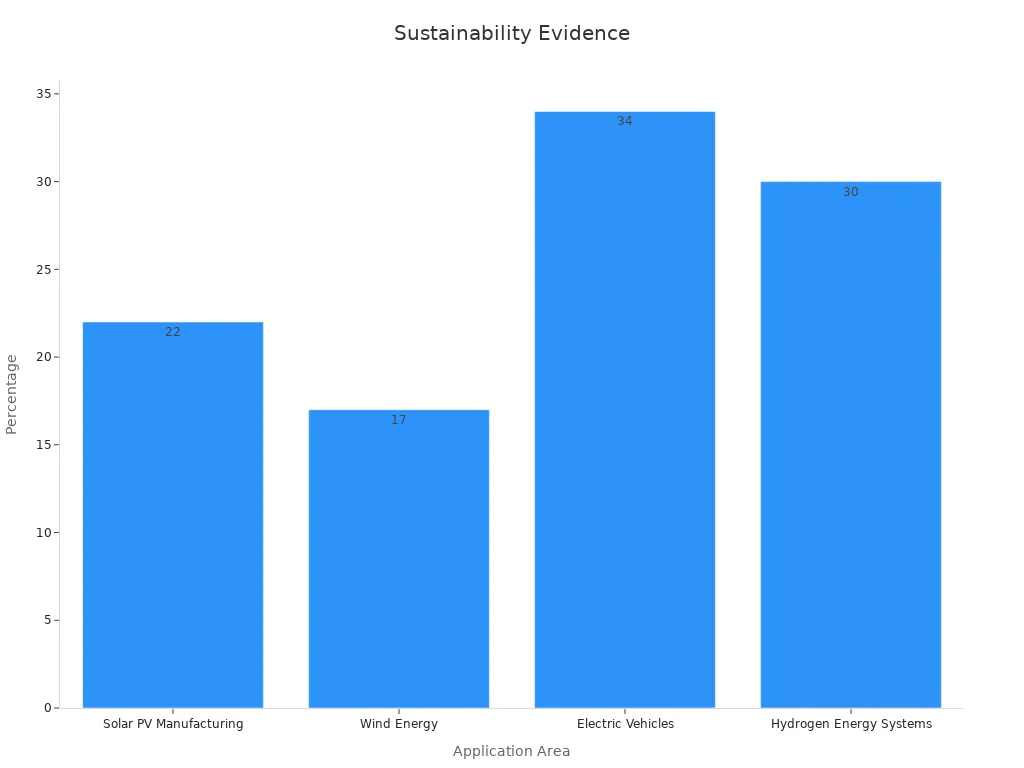
These advancements underscore the role of SiC/TaC hybrid systems in fostering sustainability. By improving efficiency and reducing resource consumption, these coatings support industries in achieving their environmental goals while driving innovation in renewable energy and green technologies.
Multi-layer SiC/TaC hybrid systems represent a breakthrough in protective coating technology. Their exceptional thermal resistance, durability, and adaptability make them indispensable in extreme environments. These coatings safeguard critical components in industries like aerospace, nuclear energy, and manufacturing, ensuring reliability and cost efficiency.
Key Takeaway: By addressing the limitations of traditional coatings, SiC/TaC systems pave the way for innovation. Their ability to withstand harsh conditions positions them as a cornerstone in the evolution of protective solutions.
As industries demand more sustainable and high-performance materials, these hybrid systems will continue to shape the future of protective coatings.
FAQ
What makes SiC/TaC hybrid systems superior to traditional coatings?
SiC/TaC hybrid systems combine silicon carbide’s thermal stability with tantalum carbide’s chemical resistance. This synergy provides unmatched durability, wear resistance, and adaptability in extreme environments. Traditional coatings lack these advanced properties, making them less effective under high temperatures or corrosive conditions.
How are these coatings applied to industrial components?
Chemical Vapor Deposition (CVD) is the primary method for applying SiC/TaC coatings. This technique ensures uniform thickness and defect-free surfaces, enhancing performance. CVD also allows precise customization, making it ideal for industries requiring high-performance protective solutions.
Can SiC/TaC coatings be customized for specific applications?
Yes, engineers can tailor SiC/TaC coatings by adjusting layer thickness, composition, and structure. This flexibility ensures optimal performance across diverse industries, including aerospace, nuclear energy, and manufacturing. Customization enhances efficiency and extends the lifespan of critical components.
Are SiC/TaC hybrid systems environmentally sustainable?
SiC/TaC coatings contribute to sustainability by extending the lifespan of materials and reducing waste. Their durability minimizes the need for frequent replacements, lowering resource consumption. Additionally, they support renewable energy technologies, such as solar and hydrogen systems, aligning with global environmental goals.
What industries benefit most from SiC/TaC hybrid systems?
Industries operating in extreme environments gain the most from these coatings. Aerospace, nuclear energy, high-temperature manufacturing, and defense sectors rely on SiC/TaC systems for their exceptional thermal resistance, durability, and adaptability. These coatings ensure reliability and cost efficiency in mission-critical applications.



